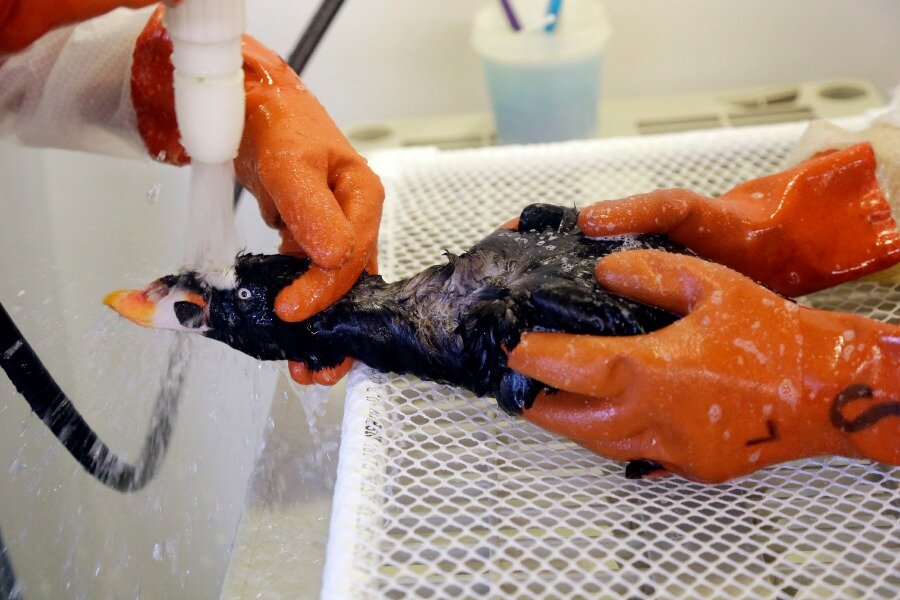Scientists race to identify goop on birds along San Francisco Bay shorelines
| Los Angeles
Three days after rescue efforts escalated to find and save goop-covered seabirds along the shorelines of San Francisco Bay, the operation has been halted – with many key questions still unanswered. Two hundred birds have died, and 315 more have been coated with a gray, sticky, and odorless substance.
Researchers don’t know what the substance is or where it has come from. They are busily – some say frantically – trying to find out by applying chemical tests and autopsy procedures. The hope is to alleviate the suffering and free the wings of the still-living birds so they can be released back into the wild.
“Identifying the substance will help us in at least two big ways,” says Andrew Hughan, spokesman for the California Department of Fish and Wildlife. “It will tell us what we can do to help the 315 birds still living, and then we might also be able to determine its source, which could help in prosecuting whoever the culprits are.”
As scientists have tried to identify the substance, they’ve ruled out polyisobutylene, an odorless and mostly colorless material that killed thousands of seabirds in Britain in 2013.
The affected birds – mostly horned grebes, surf scoters, and buffleheads – began turning up on shorelines on Jan. 16 in Hayward, San Leandro, Alameda, and Foster City, Calif. Volunteers and professional rescue workers began scouring the shorelines on Monday.
The area where the birds have been turning up is formally designated an important bird area (IBA), notes Jordan Wellwood, director of the Richardson Bay Audubon Center & Sanctuary in Tiburon, Calif. In the United States, the IBA program is implemented by Audubon and local partners.
Mr. Hughan explains why the search was called off late Thursday afternoon.
“We aren’t going to find any more live birds, so we’re not going to risk worker safety anymore in the mud and cold of San Francisco Bay,” he said.
Hughan gives credit for the operation to International Bird Rescue, an aquatic bird rescue center that has a facility in Fairfield, Calif.
“They have been the ones with their boots in the mud, they are the heroes. The birds would not have been saved if not for their people, equipment, and commitment,” he says. "The state is very appreciative."
Barbara Callahan, interim executive director of International Bird Rescue, explains what could happen in the coming days and beyond.
“The next story is what is the product and where did it come from and who did this,” she says. “Once that is known, I would hope there are regulations in place to make the responsible party pay for this response because as it is, International Bird Rescue is bearing the cost of the wildlife rescue in its entirety.” The cost is about $11,000 a day, she says.
Scientists are concerned about what other wildlife may be at risk from the substance, Ms. Wellwood says.
“The fact that it is still a mystery what this substance is is very concerning,” she says. “Time is of the essence.”





